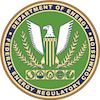Status: ILP Terminated – Preliminary Permit Active through March 31, 2027
On April 14, 2025, FERC issued a letter informing Southeast Oklahoma Power Corporation of the Commission's termination of the Integrated Licensing Process (ILP) for the Pushmataha County Pumped Storage Project (Docket No. P-1489). The proposed project was terminated after the Commission concluded that the applicant’s Proposed Study Plan (PSP) did not include the required information under 18 CFR § 5.11(b)(4). Specifically, the plans lacked explanations for not adopting certain stakeholder-requested studies and did not incorporate recommended methodologies.
The project’s preliminary permit remains in effect through March 31, 2027. Any future request to reinstate the ILP process will require a revised PSP that addresses the identified information gaps.
Background
On May 5, 2024, FERC accepted the Southeast Oklahoma Power Corporation’s (SEOPC) filing of a Pre-Application Document (PAD) for the proposed Pushmataha County Pumped Storage Hydroelectric Project (Project). The PAD and other documents related to the Project can be found in FERC’s eLibrary by searching Docket No. P-14890.
Pushmataha County Pumped Storage Hydroelectric Project
The proposed Project would be located along the Kiamichi River in Pushmataha County, Oklahoma. As currently proposed, the Project would involve the construction of a new pumped storage hydroelectric facility with an upper and lower reservoir, a re-regulating reservoir, a pump station/powerhouse, and a transmission line extending approximately 100 miles through Pushmataha and McCurtain counties in Oklahoma and Red River and Lamar counties in Texas.
Open Comment Period and Public Participation Opportunities
On July 8, 2024, FERC issued a Notice of Intent to File an Application (NOI), which started FERC’s Pre-filing Process, and a Scoping Document (SD1), which identified FERC staff’s initial scope of environmental review for the project.
Subsequently, FERC staff held five public comment meetings to receive input on SD1. Meetings were held in-person in Paris, TX and Talihina, OK and virtually in August 2024. Transcripts of these meetings are available in FERC's eLibrary and linked below.
- Transcripts from August 7-9, 2024: In-person scoping meetings (Paris, TX and Talihina, OK)
- Transcript from August 15, 2024: Virtual scoping meeting
Written comments on the PAD and SD1 were accepted by 5:00 p.m. EST on November 5, 2024.
There were three methods you could use to submit your comments to FERC.
1. eComment
You can file your comments electronically using the eComment feature in FERC Online. Using eComment is an easy method for submitting brief, text-only comments.
2. eFiling
You can file your comments electronically by using the eFiling feature in FERC Online. With eFiling, you can provide comments in a variety of formats by attaching them as a file with your submission. New eFiling users must first create an account by clicking on “eRegister.” You will be asked to select the type of filing you are making. A comment on a particular project is considered a “Comment on a Filing.”
3. File a paper copy
You can file a paper copy of your comments by mailing them to FERC. Be sure to reference the Project Docket No. P-14890 on your letter. Submissions sent via the U.S. Postal Service must be addressed to:
Debbie-Anne A. Reese, Secretary
Federal Energy Regulatory Commission
888 First Street NE, Room 1A
Washington, DC 20426
Submissions sent via any other carrier must be addressed to:
Debbie-Anne A. Reese, Secretary
Federal Energy Regulatory Commission
12225 Wilkins Avenue
Rockville, Maryland 20852
More Information and Staying Updated
OPP will send announcements about upcoming participation opportunities, meet with interested stakeholders and organizations, and attend public meetings. To stay updated, follow OPP on its social media channels: X (formerly Twitter), Facebook, LinkedIn, and Instagram.
You are also encouraged to contact OPP staff to learn more about the Project and participation at FERC by email at [email protected] or phone at 202-502-6595.
Resources
Guides on Public Participation
- Hydropower Licensing Guide for the Public
- Step-by-step guide on how to file a comment
- Step-by-step guide on how to intervene
Educational Videos
- Learn to eFile, eComment, and eSubscribe
- How to File an Intervention Using FERC’s Online System
- Filing Comments Workshop and Demonstration
- Submitting Powerful Comments Workshop
Tips on Public Participation
Informational Handouts
Background
- August 27, 2018: SEOPC files an application for a preliminary permit, pursuant to section 4(f) of the Federal Power Act (FPA), to study the feasibility of the proposed Project
- November 11, 2018: FERC accepts the application for a preliminary permit, and issues a public notice requesting comments, motions to intervene, competing applications
- February 10, 2023: Southeast Oklahoma Power Corporation (SEOPC) files an application with FERC on requesting a 4-year extension of their existing preliminary permit
- April 7, 2023: FERC grants SEOPC’s extension of the preliminary permit with a new expiration date of April 1, 2027
- May 5, 2024: SEOPC files their Pre-Application Document (PAD)
- July 8, 2024: FERC issues the Notice of Intent (NOI) to File License Application for an Original License and Commencing Pre-filing Process
- July 8, 2024: FERC issues the Scoping Document 1 (SD1) for the Pushmataha County Pumped Storage Hydroelectric Project
- September 4, 2024: FERC issues a Notice Granting Extension of Time for filing comments on the PAD and SD1

